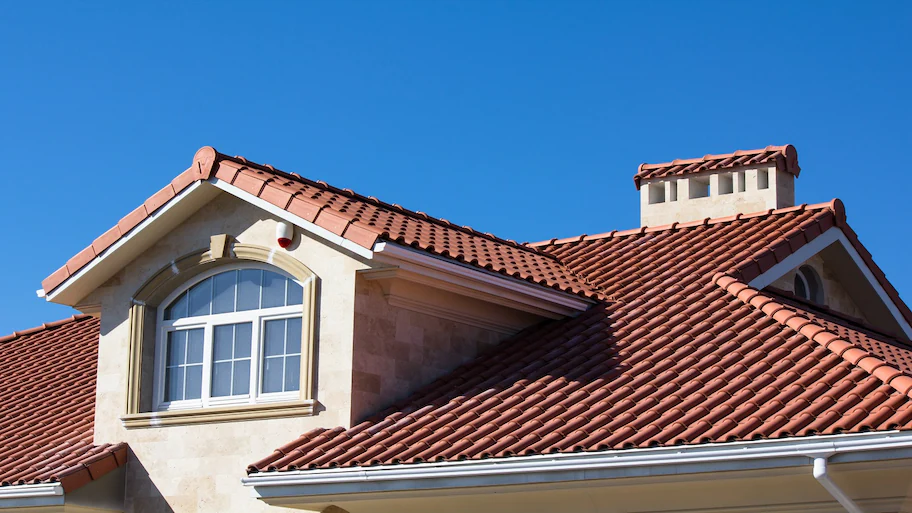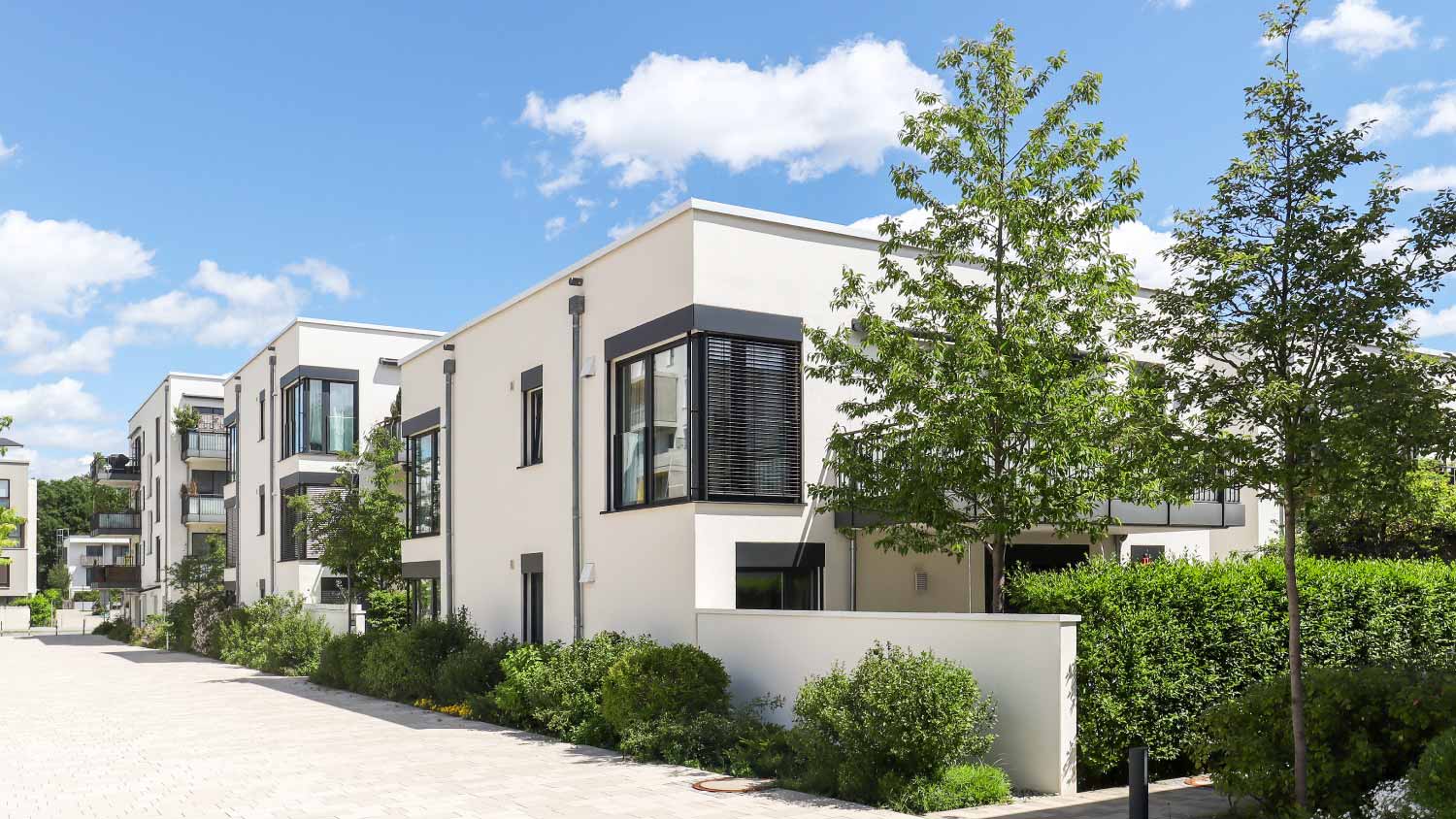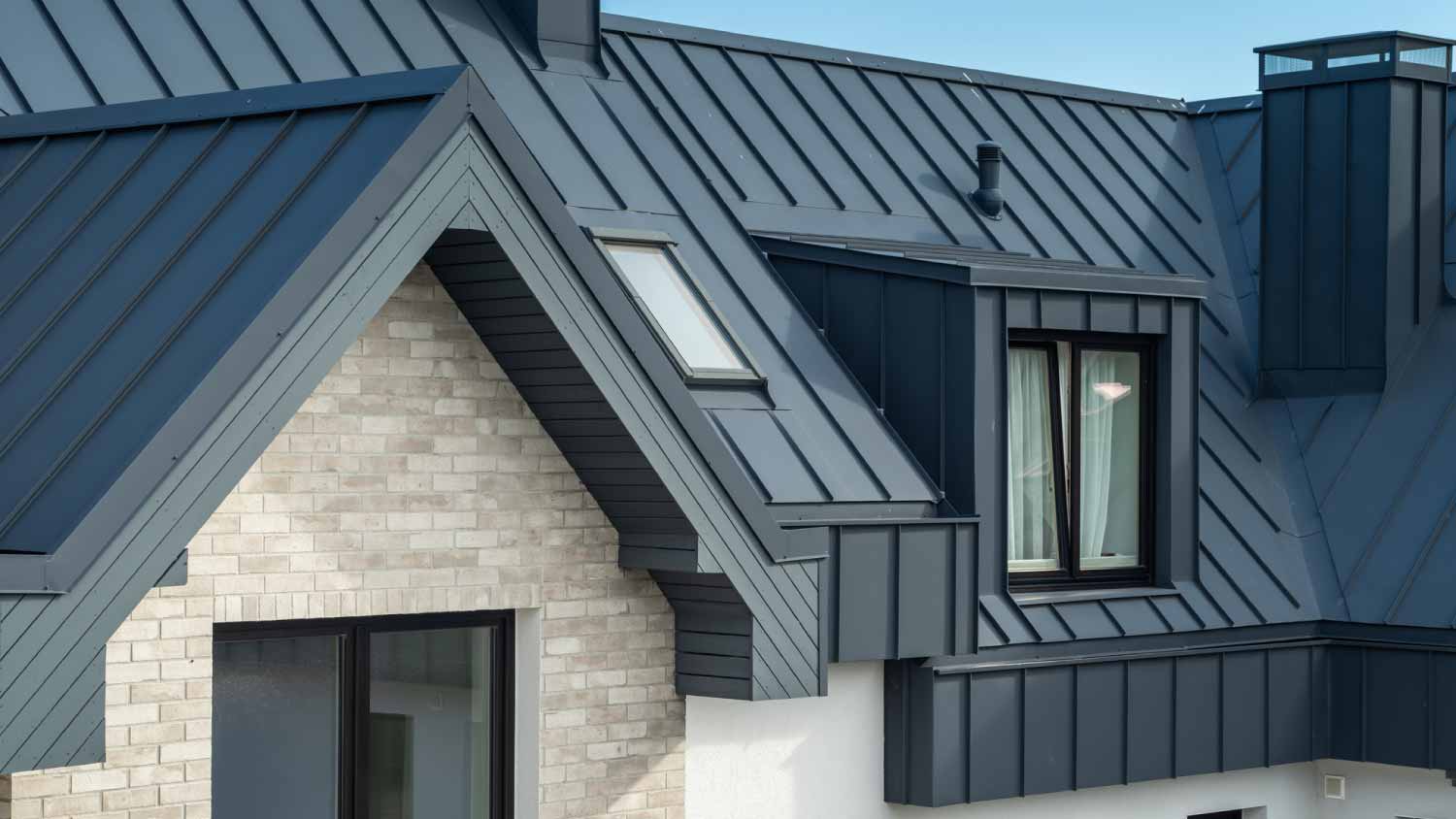Types of Metal Roofs: Materials, Styles, and Fasteners
Shiny, durable, and eye-catching—metal roofs have it all


Designing a beautiful home requires thinking about what to include, from the bottom of the basement to the peak of the roof. A metal roof is one of the best ways to make an eye-catching statement. After all, the roof occupies a significant amount of the home’s visible square footage when viewed from the street.
Although some people think all types of metal roofs are the same, they actually have significant differences. Learn more about the best metal roof features that meet your home’s needs and style.

Metal Roof Material Types
Each material available for your metal roof has unique features that set it apart from other choices.
| Metal Roof Material | Estimated Lifespan (Years) |
|---|---|
| Aluminum | 50+ |
| Steel | 70+ |
| Copper | 100+ |
| Zinc | 100+ |
| Tin | 75+ |
1. Aluminum Roofing
Aluminum roofing is one of the most popular types of metal roof materials, as it is durable and affordable. It also doesn’t weigh much, so it’s ideal for roofs where you don’t want to worry about structural integrity. It is available in multiple formats, including shingles, standing seams, and corrugated panels.
| Pros | Cons |
|---|---|
| Multiple formats | Thin sheets may dent |
| Affordable material | May bend at install |
| Lightweight | Fewer color options |
Best for: Those with a tight budget for metal roofing
2. Steel Roofing
With steel roofing, you can select regular steel or galvanized steel. Steel has excellent durability, yet it remains affordable. You’ll pay a little more for galvanized steel roofing, but it includes a zinc protective layer for a longer lifespan and improved rust resistance. If you prefer a steel luxury metal roofing product, consider stone-coated steel roofing. It adds granules to the steel sheet panels to create a high-end look that other types of metal roofs cannot duplicate.
| Pros | Cons |
|---|---|
| Lasts for decades | Coatings are pricey |
| Highly durable | Visible fasteners |
| Affordable option | May rust |
Best for: Those who want an industrial look
3. Copper Roofing
Copper roofing is a coveted luxury metal roofing. It is expensive, but it can last as long as 200 years. Because of the high price, some people choose to use it as an accent to another type of metal roof. Some people appreciate the patina it develops as it weathers and ages—but others dislike this look.
| Pros | Cons |
|---|---|
| Lasts several decades | Very expensive |
| Lightweight material | Dents with hail |
| High curb appeal | Patina weathering |
Best for: Those who want a unique and long-lasting metal roof
4. Zinc Roofing
Zinc roofing is growing in popularity among those who want a metal roof. It has a middle-of-the-road cost, yet it has some properties similar to copper, including how it develops a patina. Because it is difficult to source, though, your installer may not offer it as an option.
| Pros | Cons |
|---|---|
| Reasonable price | Difficult to source |
| Eye-catching look | Patina weathering |
| Lasts many decades | Some white streaking |
Best for: Those who want a luxury look without paying for copper
5. Tin Roofing
Because many people refer to multiple types of metal roof materials collectively as “tin roofs,” it can be confusing to try to install actual tin. If you want this material, you need to be clear with the roofing company. Tin used to be the primary option for metal roofs, but it now is one of the less common options. It provides a vintage look that others cannot match.
| Pros | Cons |
|---|---|
| Unique vintage look | Can be expensive |
| Lasts many decades | Hard to source |
| Minimal maintenance | Tough to install |
Best for: Those who want a vintage look and are willing to pay for it
6. Corrugated
Corrugated roofs have a wavy pattern applied to them, giving this type of metal roof a distinctive look. It sheds rain and snow effectively.
| Pros | Cons |
|---|---|
| Handles all weather | Needs a coating |
| Appealing aesthetics | Can be pricey |
| Good on steep slopes | Exposed fasteners |
Best for: Those who want a unique look that sheds snow and rain effectively
7. Standing Seam
Standing seam roofs use flat metal panels with a raised rib between them. Its fasteners remain hidden, which reduces leak risks.
| Pros | Cons |
|---|---|
| No exposed fasteners | Expensive option |
| High-end style | Tough to install |
| Minimal maintenance | Loud during storms |
Best for: Those who want a contemporary, modern design
8. Shingles
Some people like the look of asphalt shingles but prefer the eco-friendly and durable nature of metal roofs. Fortunately, you can install a metal roof style that delivers the look of traditional shingles. However, metal shingle roof costs can be high.
| Pros | Cons |
|---|---|
| Multiple colors | Can be pricey |
| Minimal maintenance | Tricky installation |
| Traditional look | Numerous seams |
Best for: Those who want a metal roof that doesn’t look like a metal roof
9. Tile-Inspired
Tile-inspired metal roofs have a look that’s similar to clay or concrete tiles made for the roof. However, they’re far less susceptible to breakage from hail than traditional tile roof materials.
| Pros | Cons |
|---|---|
| Improved durability | Difficult to install |
| Hidden fasteners | Possible leak issues |
| Reasonable price | Tough to source |
Best for: Those who have a Spanish-style home that often features clay tile roofs
10. Slate-Inspired
If you love the idea of installing a slate roof but worry your roof’s structure can’t handle the weight of natural stone, a slate-inspired metal roof is a great choice. It’s reasonably priced, lightweight, and extremely durable versus the real thing.
| Pros | Cons |
|---|---|
| Desirable price | Has lots of seams |
| Lighter than slate | Hard to source |
| Highly durable | Challenging install |
Best for: Those who love the look of slate but want to avoid maintenance hassles
Metal Roofing Fastener Types
Fasteners are a key component for installing the metal roof. You have two choices for the fasteners, although some styles of metal roof designs can only use one or the other.
Exposed Fasteners
With exposed fasteners, you can see them clearly. They need to use a sealing washer to create a watertight seal and prevent leaks through the metal. They’re less expensive than hidden fasteners, but some people dislike the extra step.
Hidden Fasteners
You can’t see the fasteners in a hidden fastener metal roof design. They often hide underneath design elements of the metal roof, such as the ribs in a standing seam or corrugated metal roof.
How to Choose a Metal Roof
When choosing among the different types of metal roofs, you should pay attention to a few items in particular.
Budget: The thickness, style, and type of metal all play a key role in the total cost. For example, with metal shingles vs. standing seam, metal shingles are slightly less expensive. Thicker metal is almost always pricier than thin designs.
Location: If you live near the ocean, even a little bit of salt in the air can cause faster corrosion for some types of metal roofs.
Aesthetics: One of the best reasons to install a metal roof is for the unique look that it provides, improving your curb appeal.
If you would like additional advice, reach out to a local metal roof installer for estimates and recommendations for your home before you hire a roofer.





- Roofers
- Metal Roofing
- Roof Repair
- Roof Inspection
- Vinyl Siding Repair Contractors
- Flat Roofing Companies
- Commercial Roofing
- Emergency Roofing Companies
- Leaky Roof Repair
- Metal Roof Repair
- Business Roof Repair
- Flat Roof Repair
- Tile Roof Repair
- Slate Roofers
- Rubber Roofers
- Roofing & Siding
- Metal Roof Installation
- Affordable Roofing
- Roof Sealing
- Attic Ventilation Contractors










